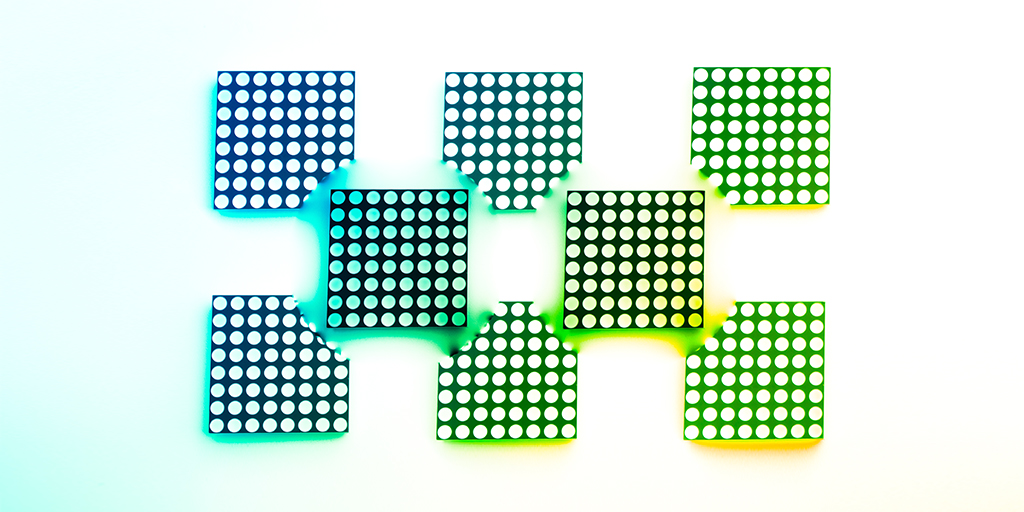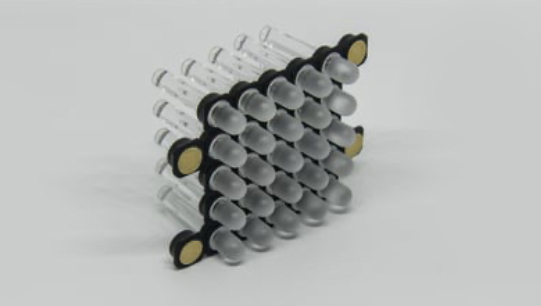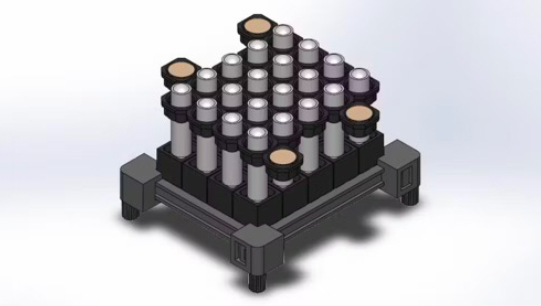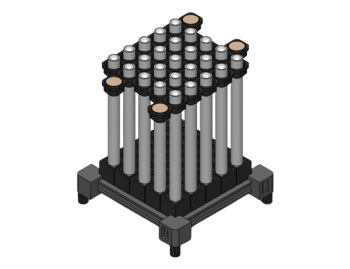
For electrical engineers, consolidating all LED light sources in one area of a circuit board offers several advantages. Placing them in an array or matrix reduces the number of pins required to control the LEDs. Instead of wiring each LED to their own pin, LEDs are arranged in rows and columns with their anodes and cathodes connected. By controlling which row and column is powered, you can use logic – rather than traces of solder – to turn on specific LEDs in the matrix.
For example, an 8×8 matrix (64 LEDs) can be controlled with just 16 pins (8 for rows and 8 for columns). Matrices can be more compact than mounting individual LED displays, saving up to 35% more PCB real estate.
Since an LED matrix simplifies the circuit design and reduces the wiring complexity, making it easier and cheaper to design, build, and maintain. They are also scalable; larger displays can be created by adding more matrices without significantly increasing the complexity of the control circuitry.
Enter the Matrix Frame
The way that these consolidated LED light sources make their way to the surface indicators is of course through light pipes. 64 LEDs would have 64 conduits to a control panel or visual display. These pipes usually would require 64 mounting holes on the circuit board.
The new Modular Light Pipe System (MLPS) from Bivar, the leading manufacturer of light pipe technology, changes this number to just four. The system’s bezel secures all the necessary light pipes for an entire LED matrix. This rectangular framework only needs to be mounted on the corners.
Just as LED consolidation saves assembly time and makes matrices advantageous, the modular system from Bivar creates a new advantage by having all matrix light pipes installed as a single component.

A Single Part Ready to Install
What does the MLPS deliver?
Right out of the package, a manufacturer receives an assembly that already holds all the rigid, rear-mounted light pipes according to its product’s specs. The MLPS part is ready to install in the PCB assembly process, with, again, just four mounting locations.
Previously, assembly lines would need to drill 64 holes and manual installation of 64 different light pipes each quantity packed separately, a tedious process that is prone to error.
The MLPS framework, including the light pipes of custom size and shape, is available in small-quantity samples, such as for one-offs for testing prototypes, and at low cost compared to other custom orders. The same low rate applies additionally to larger, production-level quantities.
A matrix of light pipes comes pre-configured and pre-assembled to fit perfectly over the LEDs, eliminating these time-consuming steps for the customer.
Customizing Through the Online Configurator
Customers can configure the specific light pipe parts they need from the Bivar website and simply add one additional step to map out the needed matrix. Bivar makes this a straightforward process through its online configurator. Customers can fill out the size of their required array or matrix. The web page automatically builds a virtual 3D model of the modular assembly, where customers can easily assign the desired light pipe dimensions to the matrix positions.
Rails, Towers, and Bezels
The four points of connection between the matrix frame and the circuit board have special methods of attachment. Bivar presents two options: the Rail and Tower (RT) system and the Rail, Tower, Bezel (RTB) system.
Which to use?
The rail and tower attachment system connects the corners of the matrix. The Bezel system, MLPS-B, is the newest addition that uses Bivar’s existing rigid light pipes that connect through a bezel for greater precision alignment to the control panel.

Tower adapter light pipes are offered in heights from 0.5 inches to 2 inches. They attach to the indicator surface with either a 3mm or 4mm diameter lens, and with either a domed or flat lens profile.
The system’s nylon and polycarbonate materials are robust for a variety of applications, including harsh outdoor environments.

There is no counterpart to the MLPS on the market today. Bivar is not only the originator of ZeroLightBleed™ technology which has optimized light pipe design, but also the innovator of the next generation of assembly-ready components that help its customers get their products to market faster.
Have questions about putting the MLPS to use in your next product? Contact us for answers or to request a sample.










